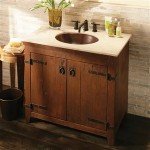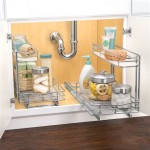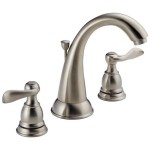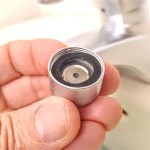What Is The Average Depth Of A Bathroom Vanity Counter?
Bathroom vanities are a staple in most bathrooms, providing storage and a surface for tasks like brushing teeth, applying makeup, and preparing for the day. Determining the right size vanity for your bathroom involves considering several factors, including the depth of the countertop. The depth of the vanity counter, the horizontal dimension from the front to the back of the countertop, directly impacts the usability and aesthetics of the vanity. A deeper counter allows for more storage and a wider work area, while a shallower counter can make the bathroom feel more spacious. Understanding the average depth of bathroom vanity counters can help you make an informed decision regarding your bathroom remodel or renovation.
Average Vanity Counter Depth
The average depth of a bathroom vanity counter ranges from 18 to 22 inches. In most bathrooms, a standard vanity counter depth of 21 inches provides ample space for storage and functionality. However, a 18-inch depth can be sufficient for smaller bathrooms or when space optimization is a priority. A 22-inch counter provides a broader surface area for tasks, offering comfort and convenience.
This range of 18 to 22 inches is based on industry standards and common building practices. However, it's important to note that individual vanity manufacturers may offer counters with varying depths. It's advisable to consult with a bathroom designer or contractor to determine the optimal depth for your specific bathroom layout and requirements.
Factors Influencing Vanity Counter Depth
The depth of a bathroom vanity counter is influenced by various factors, including:
1. Bathroom Size: Smaller bathrooms typically benefit from shallower countertops to maximize floor space. Larger bathrooms can accommodate deeper counters, offering more storage and workspace.
2. Sink Type: The type of sink you choose can also impact the depth of the vanity counter. A vessel sink, which sits on the countertop, requires minimal depth, whereas an undermount sink, which is mounted underneath the countertop, requires additional depth to accommodate the sink bowl.
3. Storage Needs: The amount of storage you require will also influence the counter depth. A deeper counter provides more space for drawers or cabinets for storing toiletries, towels, and other bathroom essentials.
4. Personal Preferences: Ultimately, the depth of the vanity counter is a matter of personal preference. Some individuals prefer a deeper counter for increased work area and storage, while others prefer a shallower counter to create a more spacious feel.
Choosing the Right Vanity Counter Depth
When choosing the right vanity counter depth, consider the following tips:
1. Measure Your Bathroom: Accurately measure the space available for the vanity, taking into account any obstacles or existing fixtures.
2. Consider Your Storage Needs: Determine how much storage you require and choose a depth that accommodates your needs.
3. Evaluate Your Sink Type: Consider the depth required for your chosen sink type, such as a vessel or undermount sink.
4. Consider Your Personal Preferences: Evaluate your personal preferences regarding countertop depth, taking into account your comfort and desired aesthetic.
5. Consult a Professional: If you are unsure about the best vanity counter depth for your bathroom, consult with a bathroom designer or contractor for expert advice.

What S The Standard Depth Of A Bathroom Vanity

What Is The Standard Bathroom Vanity Height Size Guide

What Is The Standard Height Of A Bathroom Vanity

What Is The Standard Height Of A Bathroom Vanity

What Is The Standard Bathroom Vanity Height Size Guide

What Is The Standard Height Of A Bathroom Vanity

What Is The Standard Height Of A Bathroom Vanity 2024 Guide

Bathroom Vanity Depth Guide Standard Common Depths The Housist

Bathroom Vanity Depth Guide Standard Common Depths The Housist

White Wood And Tempered Glass Vessel Sink Vanity Set
Related Posts







